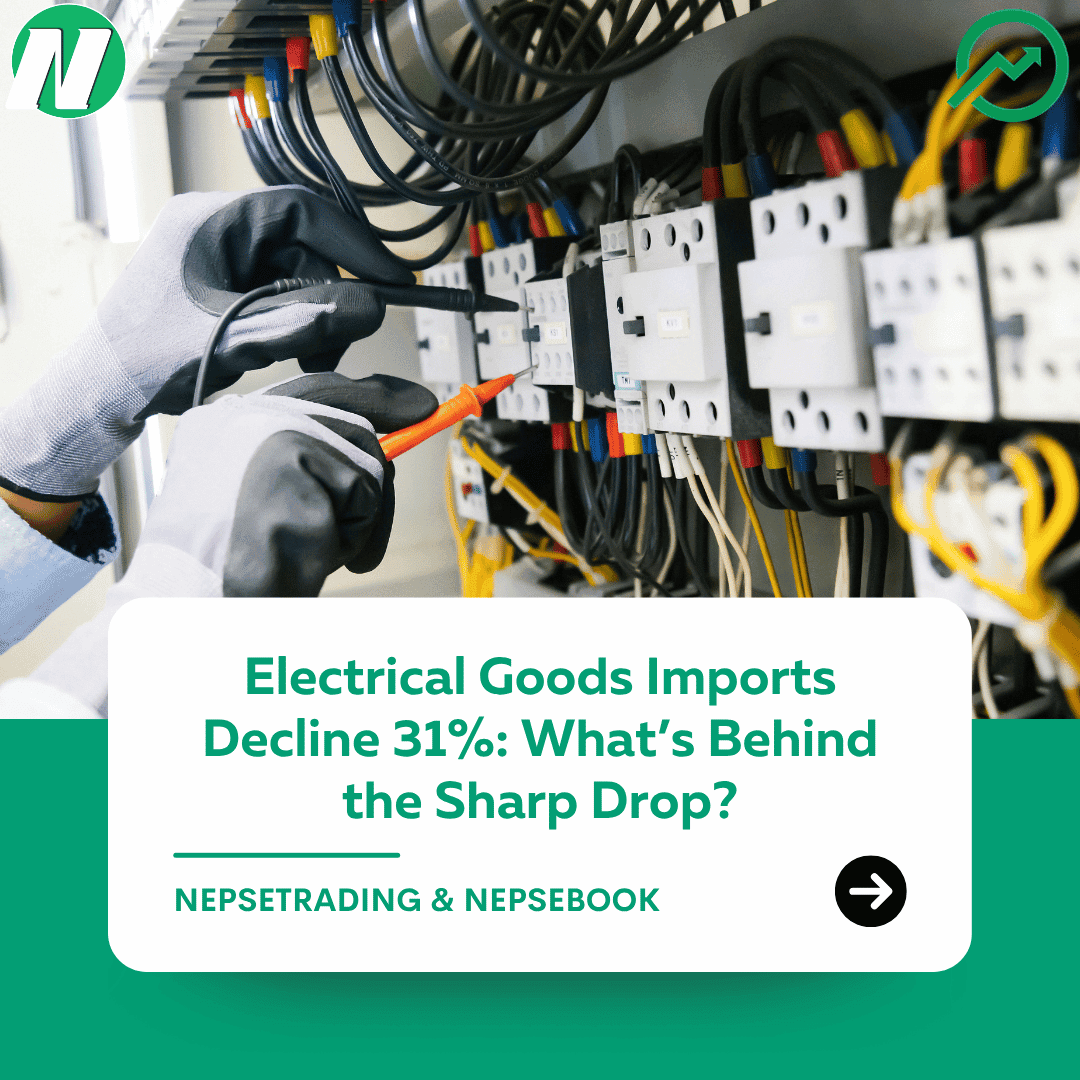By Sandeep Chaudhary
Electrical Goods Imports Decline 31%: What’s Behind the Sharp Drop?

Nepal’s imports of electrical goods fell sharply by 31.2% in the first month of 2025/26, dropping to Rs. 1.26 billionfrom Rs. 1.84 billion in the same period of the previous year. With electrical goods now accounting for just 0.9% of total imports, the decline is among the steepest in Nepal’s recent trade data.
Experts attribute the fall to several factors. First, the completion of major hydropower and infrastructure projects last year reduced demand for electrical fittings, wires, and household appliances that had previously boosted imports. Secondly, the country’s economic slowdown and tight liquidity in banks have curbed consumer spending, leading households to postpone purchases of electronic home goods.
Another reason is the increasing shift toward energy-efficient products and durable goods, which last longer and reduce frequent replacement. Many Nepali households are also opting for second-hand or cheaper regional products, curbing demand for expensive imports. In addition, government policies aimed at managing the trade deficit and foreign exchange reserves have indirectly restricted non-essential imports, including luxury electrical items.
Economists believe this trend reflects both positive and negative aspects. On the one hand, lower imports ease pressure on Nepal’s foreign reserves. On the other, weak demand for electrical goods signals sluggish consumer confidence, slower industrial activity, and declining purchasing power. If prolonged, this trend could hurt retail trade, small import businesses, and overall market dynamism.









